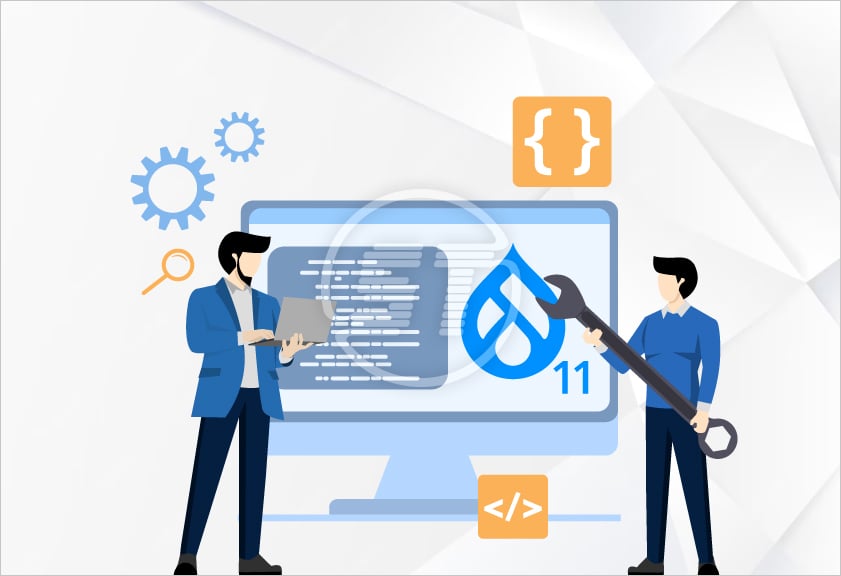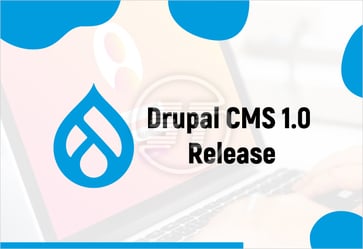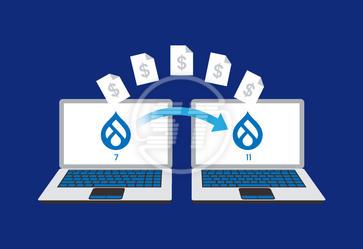Drupal needs no introduction! It is a robust content management system (CMS) widely used for developing powerful, scalable, and secure websites. However, like any web platform, optimizing for speed and security is essential to ensure smooth performance, protect data, and improve user experience.
Drupal 11 is all about enhanced scalability and security, which makes this version more dynamic and innovative. It is one of the hyped versions of Drupal due to some of its peculiarities. Therefore, update current websites to Drupal 11 in order to make it faster and secured.
Strategies to optimize speed and security in Drupal 11!
Performance optimization
Speed is a critical factor in website development, influencing both user experience and SEO rankings. Practices to optimize speed are:
Enable caching
Caching is a significant factor in boosting website speed by reducing the load on the server. Drupal offers various caching mechanisms:
- Page caching: Ensures that full pages are stored in a cache and served to users quickly without needing to reprocess content.
- Dynamic page cache: Optimizes caching for authenticated users by caching specific parts of a page that are common for all users.
- Twig template caching: Drupal uses Twig as its template engine. Make sure that the Twig debug mode is disabled, and template caching is enabled in production.
Use content delivery network (CDN)
Integrating a CDN reduces latency by serving static assets such as images, CSS, and JavaScript from servers closest to the user. Some popular CDNs are Cloudflare, Akamai, and Amazon CloudFront. Drupal supports easy CDN integration through modules like CDN and Fastly.
Optimize images and assets
- Lazy loading: Implement lazy loading for images to ensure they load only when visible on the screen. It ultimately reduces the initial page load time.
- Image compression: Compress images using tools like TinyPNG without sacrificing quality. Additionally, serves images in modern formats like WebP.
- Minification: Minify CSS, JavaScript, and HTML files to reduce file sizes and improve load times. The AdvAgg module helps aggregate and minify assets.
Database optimization
Optimize the database by regularly cleaning up logs, sessions, and caches. Use modules like DB Maintenance or write custom cron jobs for database clean-up tasks. Additionally, ensure database indexing is properly configured to speed up query performance.
Optimize JavaScript and CSS loading
Leverage Dupal’s capability to aggregate and compress JavaScript and CSS files. Go to the Performance settings under Configuration and enable the following:
- Aggregate and compress CSS files.
- Aggregate and compress JavaScript files.
This reduces the number of HTTP requests, enhancing page load speed.
Use varnish for HTTP acceleration
Varnish is a reverse proxy that caches HTTP responses, significantly improving the performance of a Drupal website. Integrate Varnish with Drupal for faster delivery of pages and assets. This is particularly effective for anonymous users or parts of the website that don’t require dynamic content loading.
Security optimization
Drupal has a strong reputation for being a secure platform, but proactive measures must still be taken to prevent vulnerabilities. Practices to optimize security in Drupal 11:
Keep Drupal core and modules updated
Keeping Drupal core, contributed modules, and themes updated is critical. Regular website update is huge help patch vulnerabilities that could be exploited by attackers. Make sure to subscribe to Drupal’s security advisories and implement updates immediately.
Use security modules
There are numerous modules specifically designed to enhance the security of Drupal websites:
- Security kit: Provides a set of security hardening options like Content Security Policy (CSP) and X-Content-Type-Options headers to reduce the risk of various attacks.
- Password policy: Enforce strong password policies, including length, complexity, and expiration, to protect user accounts.
- Captcha/ReCaptcha: Prevent bots and spam by adding CAPTCHAs to the forms.
Implement HTTPS and SSL
Ensure the website uses SSL/TLS to secure data transmitted between the server and users. HTTPS not only secures data but also improves SEO rankings. Drupal makes it easy to enforce HTTPS using the Secure Login module, which forces HTTPS on login pages and other sensitive areas.
Harden user permissions
Drupal’s flexible permission system allows for granular control, but misconfigured permissions can expose the website to risks. Follow these guidelines:
- Limit administrative permissions to only necessary users.
- Regularly review user roles and permissions.
- Disable the PHP filter module (if used), as it poses a significant security risk by allowing arbitrary PHP code execution.
Database and configuration security
Ensure that database security is prioritized with proper access controls:
- Limit database permissions to only what’s necessary for each user.
- Use strong credentials for the database and ensure it’s isolated from public networks.
- Encrypt sensitive configuration files like settings.php and ensure proper file permissions (example: 644 for files, 755 for directories) to avoid unauthorized access.
Web Application Firewall (WAF)
A WAF, such as those provided by Cloudflare or Sucuri, adds an extra layer of security by filtering, monitoring, and blocking malicious HTTP requests. It protects against SQL injection, cross-site scripting (XSS), and other web vulnerabilities.
Two-Factor Authentication
Adding two-factor authentication to the Drupal admin panel ensures that even if a password is compromised, unauthorized access will be prevented. The TFA module can easily integrate with services like Google Authenticator or Duo Security to enable two factor authentication on the site.
Regular security audits
Conduct regular security audits to detect vulnerabilities before they are exploited. Use tools like Drutiny or external issues and receive recommendations on how to mitigate them.
Automating speed and security testing
To maintain speed and security optimizations, automate regular performance testing and security checks:
- Use tools like New Relic and Pingdom to monitor site speed and receive real-time alerts if performance degrades.
- Set up automated security scanning with tools like Qualys or Nessus for ongoing vulnerability detection.
In a nutshell,
Optimizing for both speed and security is vital for the success of any Drupal 11 website. By leveraging caching, image optimization, and CDN for performance, along with regular security updates, organizations can ensure a fast, secure, and efficient website. Maintaining an ongoing process for performance and security audits will keep the Drupal site resilient to both traffic spikes and evolving cyber threats.
Looking to boost the speed and security of your Drupal 11 website? Skynet Technologies, a Drupal Gold Certified Partner , is here to help! With our expert team and comprehensive Drupal development services, we can optimize your website for peak performance and robust security. Whether you're upgrading to Drupal 11 or building from scratch, our tailored solutions ensure a faster, safer, and more reliable digital experience. Let us help you unlock the full potential of your Drupal website—Reach out at [email protected] to discuss how we can take your site to the next level!


